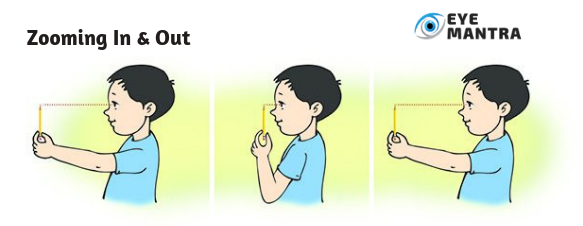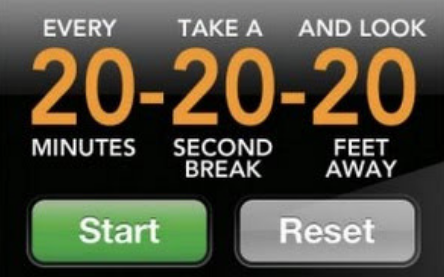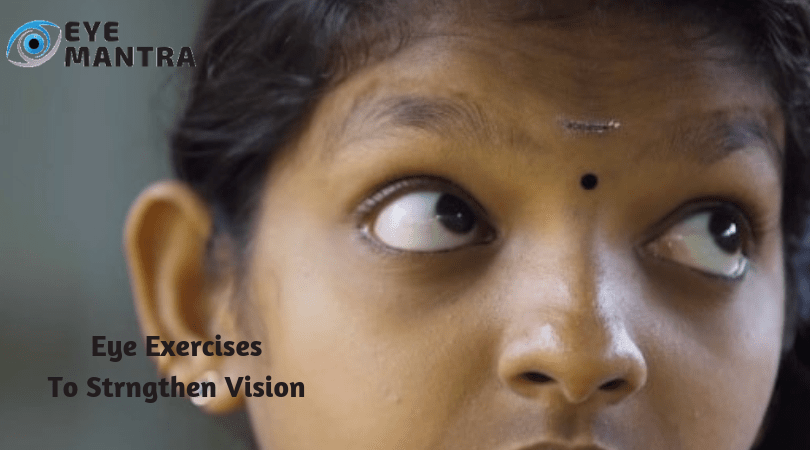For centuries, people have sought better eyesight without glasses. And several types of research, studies have been conducted in favor of advocating a healthier lifestyle as a cure for all ailments have recommended eye exercises to provide freedom from spectacles. Eye exercises have been promoted as a “natural” cure for vision problems, including eyesight.
Though, not many studies could prove that exercising eyes can improve vision. However, they certainly help with eyestrain and your eyes feel better afterward.
If you have distinct eye conditions, like Age-related Macular Degeneration (AMD), cataracts, color blindness, and glaucoma, you probably won’t benefit from these exercises. People with the most common eye diseases, such as squint eyes, myopia (nearsightedness), or hyperopia (far-sightedness) may be able to experience some benefit from eye exercises.
Contents
Benefits of Eye Exercises
In the anatomy of the eyes, there are muscles and they can get sore when held in one position for too long, just like all other muscles of our body. Give your eyes a short break, frequently, and you will be very grateful over the years.
Exercises of eyes probably may not improve your vision, but they can provide comfort to the eye, especially if there is a computer effect on eyes. Or your eyes get irritated at work. The condition known as Computer Vision Syndrome or Digital Eye Strain is common among people working at computers all day. This condition can cause:
- Dry Eyes,
- Eye Strain,
- Blurred Vision,
- Headaches.
A few simple exercises may help you improve the symptoms of digital strain in the eyes.
Moreover, you can consult the best Eye Doctor to advise and devise supervised programs of vision therapy, if you have certain eye alignment and other binocular vision problems.
Self-help programs of eye exercises to improve vision are not recommended in such cases.
Though, vision therapy is sometimes, mistakenly, considered equivalent to “eye exercises,” doctor-prescribed vision therapy includes specific activities to help correct vision problems such as Squint Eye or Strabismus and Amblyopia (lazy eye), or to enhance dynamic visual skills for sports vision.
Most of the doctor-prescribed and supervised vision therapies and convergence exercises have been proven safe and effective by the researches.
Best Exercises
There are several exercise programs available online, which are said to be devised by the experts. Most of the exercises recommended are similar and do not offer any guaranteed results. All of them are tagged with a disclaimer that the duration of exercise for optimal results is not specified, and also that the results may vary from person to person. The following are the basic techniques around which all programs are built.
1. Rapid Blinking

Blinking is a reflex function. Still, there is no conclusive evidence that it helps you get 6 by 6 vision, even though it is claimed so. However, in the current work environment, conscious blinking is a good idea because our blink rate reduces significantly when focusing on something. Like reading or sitting in front of computers, televisions or smartphones. Blinking spreads the tear film all over the eyes and lubricates them. It also provides the eyes with much-needed rest, therefore decreasing fatigue and strain.
Sit comfortably with the eyes open. Blink 10-15 times very fast. Close your eyes and relax for 20 seconds. Repeat this process 4-5 times.
The think and blink plan is the cornerstone of principles for computer users, especially in patients who have computer vision syndrome and dry eyes. The solution is to repeat the exercise many times, throughout the day.
- Slow Blink- For 2 minutes, blink your eyes every 30 seconds, closing them properly and firmly, but gently.
- Quick Blink- For 2 minutes, blink your eyes every 4 seconds, rapidly, for optimal benefit.
It must be performed several times during the day to get the best results.
2. Palming

Rub the palms of your hands together vigorously, until they are warm. Now place them gently over your eyelids, covering them in the hollow of your palms for about a minute, breathing normally. Keep the enclosure closed from any light entering through your hands. Let the warmth of your palms transfer onto the eyes. You will feel the eye muscles relax as the eyes will find relief in the darkness. Continue until the heat from the hands has been completely absorbed by the eyes. Repeat 2 to 3 times.
This technique not only helps by relaxing the eyes but also resulting in a redistribution of tears and lubrication of the eye surface.
Your best Eye Doctor will advise you to take a deep breath and relax your neck muscles, closing your eyes. Make sure your elbows and forearms are well supported. Experts suggest repeating several sets of this exercise, several times a day for optimal results.
3. Figure of 8

Imagine a large “8” figure in front of you, approximately 6 feet away. Now revolve your eyes to trace its shape slowly in the clockwise direction. Repeat this process for 3 to 5 minutes. After this, you must trace the same shape in the anti-clockwise direction for the same duration.
Or you can try it another way. Sit with legs straight in front of your body with the right hand on the right knee. Hold the left fist above the left knee, with a straight elbow and the thumb pointing upwards. Focus your eyes on the thumb, keeping your head still. Draw a figure “8” with your thumb, keeping the elbow straight all the time. Repeat this exercise 5 times each in the clockwise and anti-clockwise direction. Then repeat the process with the right thumb.
This must be done in multiple sets, several times during the day to achieve the best results.
4. Convergence and zooming

Another effective exercise for the eyes is zooming in and out. As you must have guessed from the name, you make an object zoom for your eyes so as to shift the focus of your vision. Sit on a chair with your arm outstretched and your one finger or the thumb up. Or may use a pen. Keep your focus on it. Now, bend your arm gradually. Slowly bring it closer and draw the finger closer to your eyes, thus zooming it in focus. Until it is about 3 inches away from your face or becomes blurred. Don’t take your eyes off the finger and try and keep your focus on it till it becomes clear again. Move the finger back to its original position with your arm stretched out as far as possible.
Convergence exercises help to strengthen your near vision muscles. They also help in delaying Presbyopia by exercising the muscles responsible for stretching.
Or you may try to focus on something far away to relax your eyes. Repeat this cycle for at least ten minutes, and several times a day.
5. Side to side movement

This exercise is about moving or rotating your eyeballs from one direction to another.
Moving the eyes together, from side-to-side also is said to relax the eyes and improve vision. The tiny eye muscles get more active and healthy with the improvement in blood circulation from the shifting.
To perform this technique, first, sit in a relaxed position. Look to your leftward corner and then bring the gaze gently in the opposite direction. Looking at something at least 6 to 8 feet away. You must hold your gaze in one direction for a few seconds before moving it to the other extreme the same distance.
You should do this for 3 to 5 minutes, and then vice versa. This should be performed in multiple sets. Repeated during the day for the best results.
6. 20-20-20 Formula

The visual strain is a real problem for many of us working people. Our eyes are not supposed to be glued to a single object for extended periods. When we stare at a computer all day, the 20-20-20 formula would help prevent digital eye strain. To implement this rule, every 20 minutes, look at some object 20 feet away for 20 seconds. This formula refreshes the eyes.
Pros and Cons of Eye Exercises
Exercises are Recommended for
Accordingly, doctors recommend eye exercises for conditions involving how the eyes work together, such as convergence insufficiency.
Your eye doctor may prescribe eye exercises if you have:
- Trouble focusing your eyes to read,
- One eye that drifts outward or inward,
- Had surgery and need to strengthen muscle control,
- Strabismus, or crossed eyes,
- Amblyopia, or ”lazy eye”,
- Double vision,
- Binocular vision problems (poor 3D vision),
- Blurred vision,
- Eyestrain,
- Increased light sensitivity.
Not Recommended for
They won’t help if you:
- Have dyslexia,
- Blink a lot,
- Have eye spasms,
- Have a paralyzed eye muscle.
What if eye exercises do not improve my vision
Usually, eye exercises DO NOT improve vision, or, at least, make very minor changes. Too minor to count. However, they can help with binocular vision, errors like convergence insufficiency and certain other eye diseases of ocular motility. However, they all require a specific program customized to the needs of that particular patient, and no one program would suit all.
Moreover, if you do not want to wear your glasses, there are several other options available, as well. Out of which, some may be temporary or permanent surgical solutions. These are:
- Contact lenses for better vision without the need to wear glasses.
- Orthokeratology or the science of wearing specialized contact lenses that mold the cornea shape helping in reducing or eliminating refractive errors with time.
- Specs removal surgery. These include LASIK and all its variants, Implantable Collamer Lenses (ICL), Refractive Lens Exchange (RLE) or Clear Lens Extraction (CLE), as well as cataract surgery. All of these may be used alone, or in combination with another refractive surgery, for optimal results, depending on the visual needs, and eye structure and refractive error of the patient.
Still, the above-listed eye exercises are well-recommended. Because by doing even a few of them you may well increase your productivity, eliminate headaches and errors, and even reduce your risk of glaucoma. And these do not take a long time, so you don’t even have to take time off for these exercises so a busy schedule should be no excuse.
Generally, there’s no one way to improve vision and eyesight. However, you can take steps to improve eye health by avoiding eye injury by wearing protective eyewear, having good eye nutrition, etc. If you have diabetes, control your blood sugar. Don’t miss your regular eye checkups.
For more information on improving eyesight and vision, or if you are facing any difficulties, visit Eyemantra. We offer various services like Retina Surgery, Cataract Surgery, Specs Removal, and many more.
Call +91-8851044355 NOW to book an appointment. Or email at eyemantra1@gmail.com.
Related Articles
Best tips for eye care in Pollution
A Complete Guide to Good Eye Care in the Elderly
10 Tips for prevention of cataract : Home remedies
